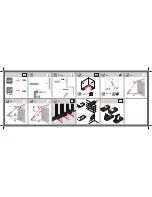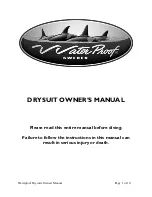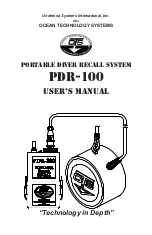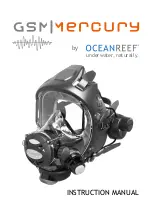
Champion Rescue Tools – SUPER BEAST Multi-tool Detailed Tool Instructions
© Champion Rescue Tools
Using the SUPER BEAST as a Cutter
1.
Always inspect the tool prior to each use.
2.
Turn the valve at the power unit to the “ON”
position
3.
Be sure to follow proper general procedures (as well
as any department specific procedures) for
performing vehicle extrication – otherwise severe
injure or even death for occupants or tool operators
is possible.
4.
Do a visual check before making a cut, as for every
action there is often an equal reactions. Check
twice and cut once.
5.
Open the cutting blade to the distance required to
ensure you get the material to be cut into the notch
(bottom of the blades close to the blade bolt) and
start your cut. If you are unable to get the material
all the way into the notch at least get it as deep as
possible. Don’t use the tip of the blades on solid or
extremely had materials. If the cut cannot be made
the first time, then reopen the blades and
reposition for another cut. Always use common
sense.
6.
Remember, the notch is where the tool makes its
maximum power.
Champion offers a line of specialty blades designed
for specific extrication applications – contact the
Sales Department for more information.
Using the SUPER BEAST as a Spreader
1.
The SUPER BEAST Spreader can be used to spread,
crush or lift. Keep in mind if you lift with this tool,
lift 1” crib 1”.
2.
DO NOT use the aluminum portion of the arms for
spreading, lifting, or crushing as this may result in
damage to the arms and presents potential risk to
the operator.
3.
Try and use as much spreading surface area to push,
crush, or lift on the tips so you have more contact
surface.
4.
Always pick up the tool by the handles only.
5.
To take the spreader off line or to change the head
back to the cutter head follow the head change
instructions provided in this manual.
6.
When the tool is not in action rest the tool on a part
of the vehicle or structure with a firm grip on the
handles while you are awaiting you next task.
Otherwise you can rest the tip of the tool on the
ground, in vertical position, holding the rear handle
while you are waiting. This will help reduce
operator fatigue.
Maintenance Instructions
1.
Inspect both heads and the tool after every use for
wear and damage. Never use a damaged tool.
2.
Remove any debris from the tool or heads.
3.
Keep the tool clean and dry. Wipe with a clean
cloth if necessary. Use a mild detergent to clean the
tool and dry thoroughly.
4.
Lubricate the valve spring with a light lubricant, such
as WD-40.
5.
Lubricate the detents on the pins with a light
lubricant such as WD-40 or a light silicon lubricant.
Check adjustments on detents.
6.
Ensure that all handles are tight. There are screws
on both rear and front handles, use blue lock-tight
to secure if necessary.
7.
Inspect couplers to ensure that they operated
correctly and are free of dirt and debris. Blow out
with an air hose if needed.
8.
Inspect hoses for cracks, cuts and bulges. DO NOT
operate tools with damaged hoses.
9.
Inspect the spreader arms and cutting head for
wear or damage. DO NOT operate with damaged
arms or blades.
10.
Keep tool free from rust and corrosion.
11.
Replace handle if broken or damaged.
12.
Replace Missing or damaged decals, if needed.























